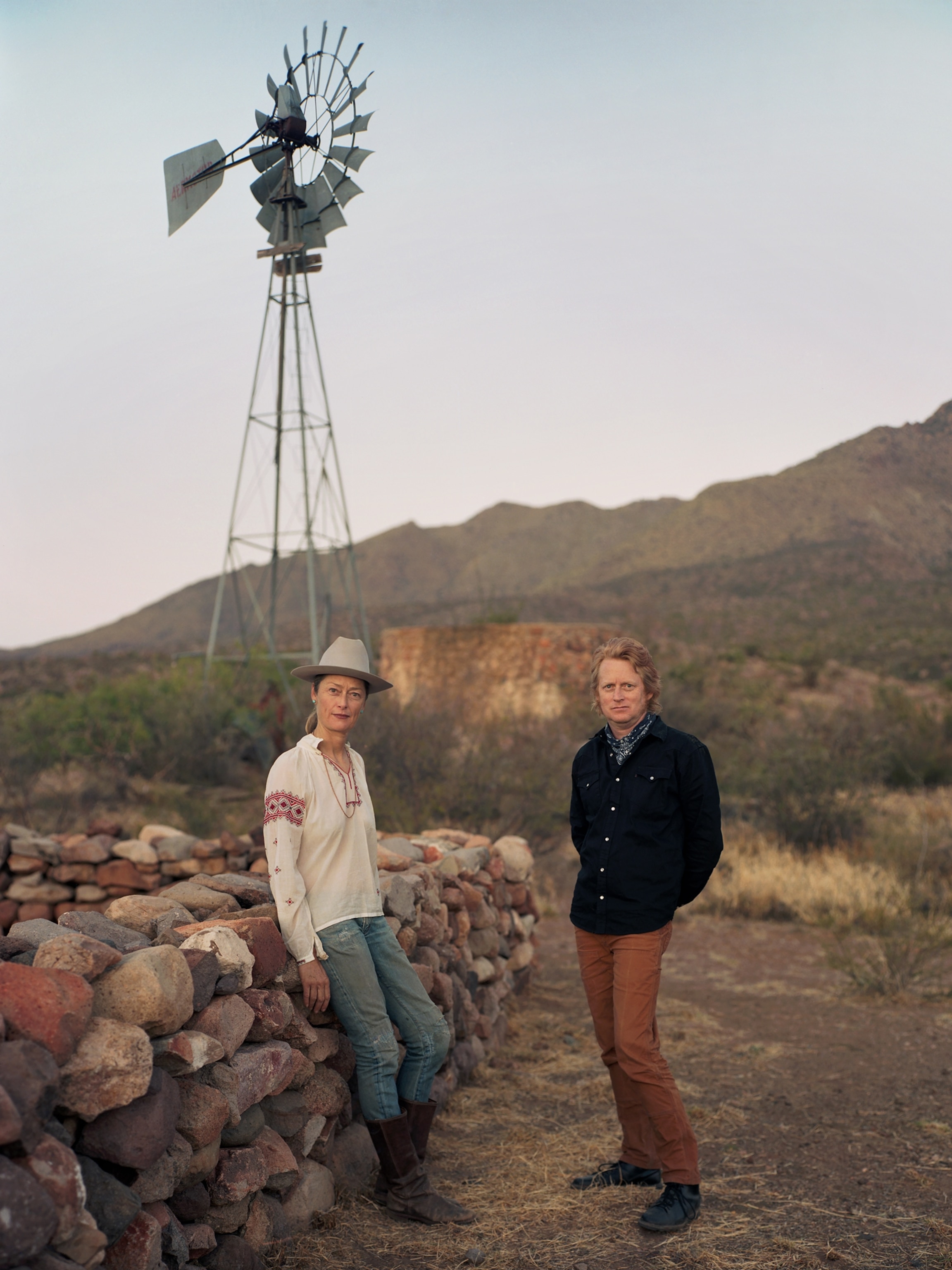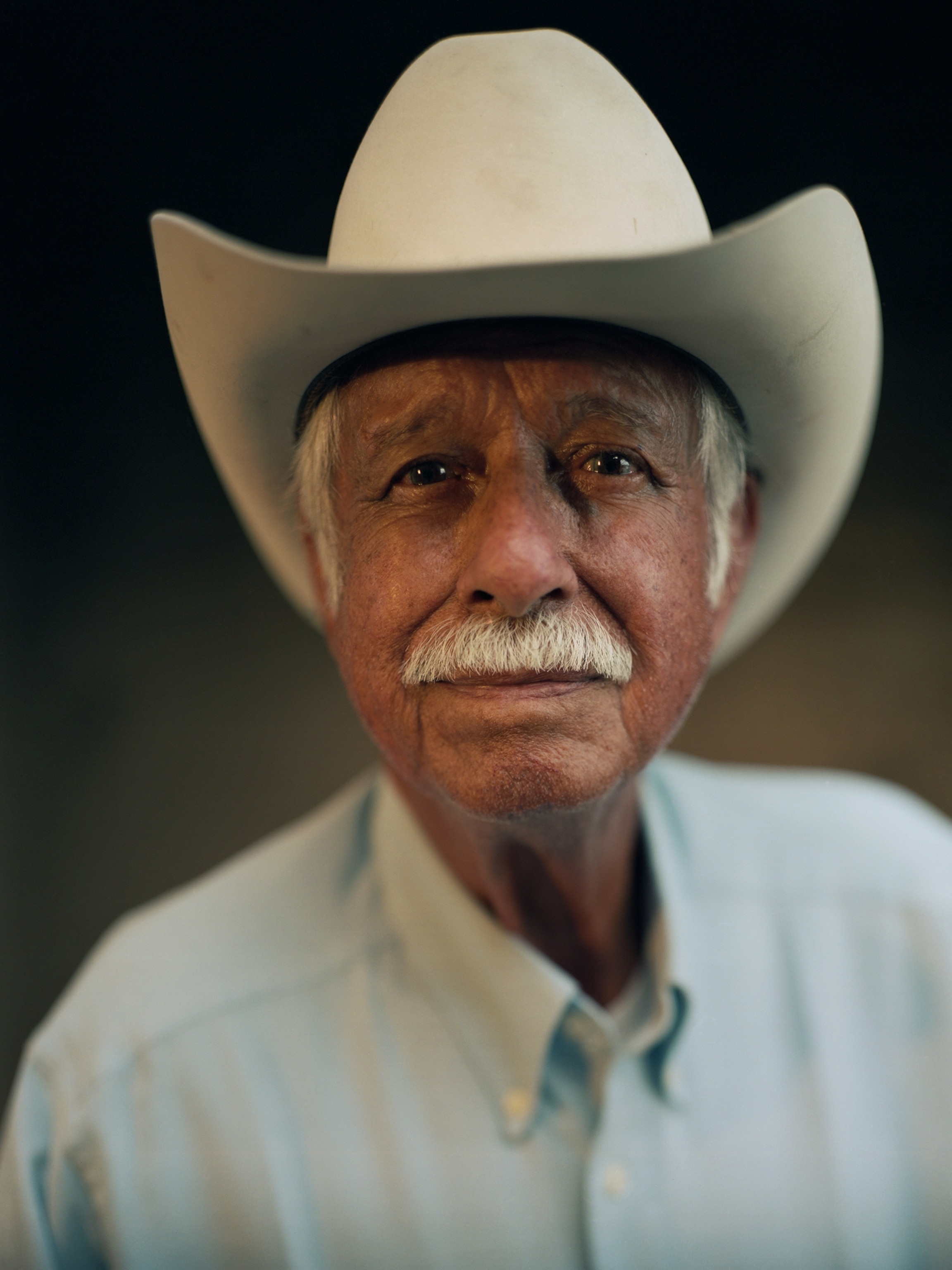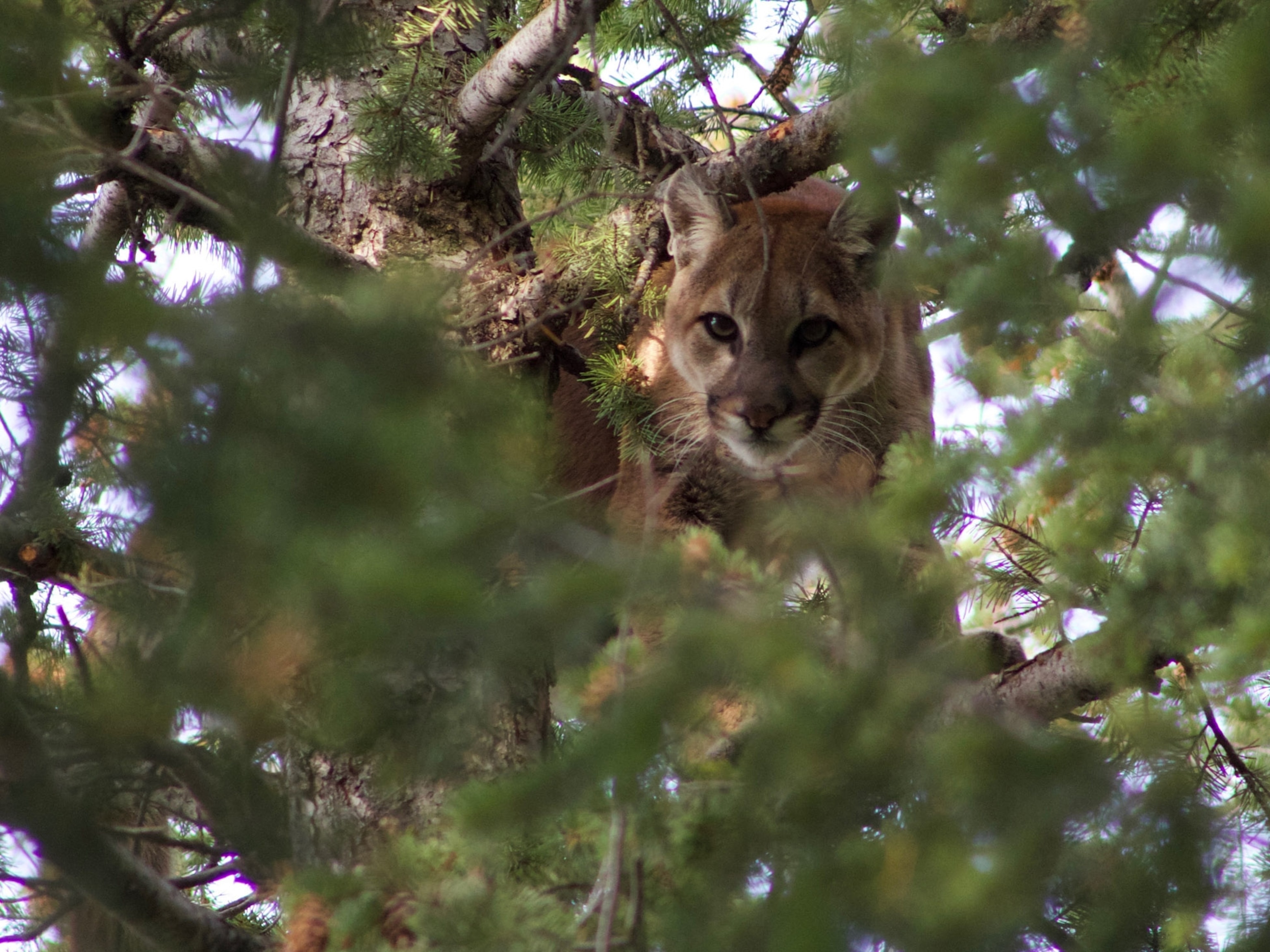
Legends of Texas come alive along this wild frontier
On desert borderlands, Big Bend National Park is rugged, remote—and full of surprises.
The black bear and her two small cubs were foraging in a dense woodland of mesquites, junipers, and Texas madrones when I encountered them some 20 yards off to my right. The mother bear stopped but did not rear up. No doubt she had heard me coming. She looked me over. I was her inferior in every way that counted at this moment.
I was hiking alone that October morning on the 12.5-mile-long South Rim Trail in Big Bend National Park in West Texas. I’d arrived at the park just after dawn, escorted by jackrabbits and roadrunners along the highway, and for the first two hours of steady ascent the only signs of life had been butterflies, a couple of bright yellow Scott’s orioles, and a backpacker who was just returning from a solo campout.
After taking a break at the South Rim, with its commanding view of the surprisingly verdant north Mexican desert, I’d begun to see a few other hikers coming up from the opposite direction. One of them told me that she had spied the mother and her cubs. Although signs throughout the park warn tourists about its more formidable wildlife, no more than 40 black bears live there; I had yet to come across one in nearly three decades of frequent visiting. And black bears rarely attack humans.


Still, I had heard back in the town of Marathon, Texas, something about this particular bear that gave me pause—she’d lost the third of her cubs several days earlier when it had strayed onto a road a few miles from here and had been hit by a vehicle.
Now here she was, and here I was.
I looked away and resumed casual strides while not-so-casually wondering: Do bears seek vengeance? Do they mourn? Then the trail took a sharp turn, and I watched as the dark and diminished tribe slowly receded into the woods. The mother, I decided, was no different from my own, who had also lost a child and had responded by redoubling her maternal commitment to the two that still lived.

To take in the encompassing abundance of wildlife at famed national parks like Yellowstone, Denali, and the Everglades is its own enriching experience. But such communions achieve a different significance in the desert. They remind you that life is at the same time precious and where you least expect to find it. Above all, life in the Chihuahuan Desert that comprises Big Bend’s 1,252-square-mile expanse is stubborn and easily misunderstood but also impossible to forget.
There’s another dimension to America’s 27th national park, one that adds a layer of territorial intrigue: Big Bend shares a 118-mile border with Mexico, roughly 6 percent of the boundary separating the two countries. Arizona’s Organ Pipe Cactus National Monument is also a borderland park, but it has been fenced off from the United States’ southern neighbor since 2006, after the shooting of a park ranger four years earlier by a Mexican national.
(Here’s what 2021 looked like for migrants across the Americas.)
By contrast, no similar physical barrier has been erected along Big Bend’s long and rugged border, with the result that the park, even while minding its own business, has been continually thrust into debates over U.S. sovereignty and national security. The specters of drug trafficking, illegal immigration, and even terrorism have drawn scores of federal agents to the periphery of Big Bend. And that is its paradox: One of America’s most off-the-grid national parks, a haven for escapism, cannot escape the endless tug-of-war of geopolitics.
Big Bend’s far-flung locale is likely a major reason its scruffy charms have long been prone to underappreciation.
“You were at the South Rim yesterday?” Craig Carter asked. The 58-year-old rancher grinned. “I’ll bet I’ve been there 700 times. Whenever I’d go, I felt like I was seeing it for the first time.”
Carter lives just outside of the park on a 12,000-acre horse farm called Spring Creek Ranch. The life of his family has been inseparable from Big Bend. Carter’s great-grandparents lived inside the park before the state acquired its 700,000 acres and deeded it to the federal government in 1943.

The previous evening I’d been in the dusty town of Marathon, 23 miles north of Carter’s ranch, in my room at the Gage Hotel, the iconic 94-year-old adobe inn that has long epitomized upscale desert lodging. A country music band was playing on the bar patio, and I went to check it out. Carter was the lead vocalist. It turns out that he regularly tours Europe as a solo act and with a band, and that he also makes steady income as a movie wrangler—“teaching actors how to ride a horse and not shoot themselves,” as he described it.
I spent the morning bouncing along in Carter’s jeep in proximity to quail and mule deer while he shared with me his secret for how best to cook javelina (“The trick is to take out the musk sac near the base of the spine”) and the spot on his ranch where he once discovered a 1900 Indian Head coin (“I’m saying that’s my great-grandfather’s last nickel until someone proves otherwise”).
The mythic Texas that resides in the world’s collective imagination—an undomesticated, cactus-strewn moonscape of sturdy-hearted cowboys—is manifest in Big Bend country like nowhere else. It’s also fair to say that the Chihuahuan Desert breeds unorthodox behavior. Big Bend devotees regard this as a highlight rather than a drawback.



Pre-pandemic, 400,000 tourists traveled to Big Bend annually; it is among the least visited national parks in the U.S. (Yellowstone receives nearly 10 times that number of guests.) In part this is because of its remote location. The nearest commercial airport, in Midland, Texas, is four hours from the park’s entrance. The drive from Austin that I regularly undertook as a longtime resident of that city could charitably be viewed as a seven-hour Texas geography lesson. Limestone Hill Country segues to mesquite shrubland to butte-crested Permian Basin to semibarren plains that, eventually, give way to the mile-high Glass Mountains just north of Marathon.
(Avoid crowds at the 10 least visited U.S. national parks.)
Big Bend’s far-flung locale is likely a major reason its scruffy charms have long been prone to underappreciation. To have the largest number of bird and cactus species of any American park does not confer glamour. The history it reveals—300 million years of once mighty seas, forests, dinosaurs, and earthquakes—is a stunning but obscure tale told mainly in fossils and stratigraphy. And while Big Bend’s imposing geological formations have the craggy prehistoric vibe of Italy’s Dolomites, they somewhat lack the postcard-worthy symmetry of Utah’s Arches and Arizona’s Grand Canyon.
But Big Bend has something else that its counterparts do not: that 118-mile liquid border with Mexico known as the Rio Grande, whose undulations give the Texas park its name. Its frothing acrobatics in Santa Elena Canyon draw kayakers; its low-water points southwest of the park draw contrabandistas conveying whatever may be of interest to the U.S. consumer.

One morning during my recent visit, I drove out of Marathon with my friend James Evans, a photographer who has lived in the town for the past three decades. We veered off Highway 385 to the Black Gap Wildlife Management Area, on the park’s northeastern flank. Although the year had been a dry one even by the desert’s parched standards, a recent rain had awakened green shoots from the spiny ocotillos that maintain sentry over the region. Splashes of purple sage and red firecracker bushes girdled the primitive one-lane road to the river.
We found a campsite no more than a hundred yards from the Rio Grande, though it required evicting a family of javelinas. Three cows and a white horse grazed nearby, oblivious to us. Whose were they? Descending to the Texas side of the riverbed, I could see the spidery imprints of a heron—and someone else’s bootprints, though it had been several hours since we’d spotted any other human. In the desert, life is always closer than you think.
The moon still loomed and the desert temperature had dropped to the low 40s when I woke up to the morning light. The horse and cattle had vanished. While Evans stood on top of his four-wheel drive and took pictures of the river, I studied the dirt and the random assemblage of seashells from the late Cretaceous period a hundred million years in the rear view.


Driving back to Marathon, we took a detour to the old La Linda International Bridge, once used to haul fluorspar from Mexican mines to the United States. The bridge had been closed for decades. But a large campground beside it was still in operation. Camp manager Butch Jolly said that he’d seen bear tracks by the river that morning, not far from the fishing hole where he previously had pulled out a couple of 40-pound yellow catfish. I asked him what he used for bait.
“Hot dog wieners with garlic, steeped in cherry Kool-Aid for four hours,” he replied.
Border Patrol officers are a common sight in Big Bend country, but there is a frontierless aspect to this part of the world. The omnipresence of cuisine and laborers from the other side of the river are only the most obvious signs of this reality. The park’s small population of black bears are themselves migrants from Mexico.
In turn, Big Bend’s colorful buntings and warblers make their winter home down south. One morning I walked over to the Gage Hotel’s lush botanical garden and was stunned to find it canopied with many hundreds of monarch butterflies that had made their seasonal trek north. This may be the land of big skies, but what truly humbles the soul here is the everyday spectacle of grace in the desert.
Feeling in need of company one afternoon, I went to see a prehistoric friend, the Mule Ears Peaks. The drive there was along a well-paved if winding road called the Ross Maxwell Scenic Drive, which roller-coasters its way along the western fringe of the ruddy Chisos Mountains. By the time I arrived, it was over 90 degrees.



The trail snaked through acre after acre of ocotillo, yucca, sotol, and sagebrush. But my eyes remained trained on the vista ahead—specifically, on the two dark, more or less triangular pillars jutting out of the plain, in and then out of view with every turn the trail took. The geological anomalies happen to be lone survivors of a volcanic eruption in the park that otherwise disintegrated enormous frozen sheets of magma about 29 million years ago. From that act of natural violence, the Mule Ears were born—a pagan monument playing its eternal game of peekaboo, a joke that never gets old.
I took my leave of the Gage Hotel’s plush bedding and swimming pool, and headed west from Marathon to the other towns encircling the park.
Alpine, the seat of Brewster County, has been a nexus for cattle traders for more than a century. In decades past I’d gravitated to Alpine to drink tequila with the legendary six-foot-five Texas Ranger Joaquin Jackson—a good friend now six years deceased, though not from drink. The largest town at the northern edge of Big Bend country, Alpine (population 6,035) has the area’s best offering of camping provisions. For me, that meant stocking up on fine cheeses and excellent wine from the Texas Hill Country and from Baja California at Taste and See Bakery, as well as locally roasted coffee at Plaine (which has since closed).

At the coffee shop I also met with Kayla Duff, a 24-year-old native Californian who’d recently opened Big Bend Beef, a ranch-to-table repository of grass-fed Brangus beef cuts. Duff had brought me a hefty slab of flank steak for an upcoming fajita cookout.
I threw the meat in my cooler and drove another half hour west to Marfa. Initially famous as the movie set for the 1956 Western film Giant, starring James Dean and Elizabeth Taylor, the town spent the ensuing postproduction four decades in a state of slumber. Or so it seemed: The minimalist artist Donald Judd had relocated there during the 1970s, quietly snatching up downtown real estate and erecting striking art installations in the desert. A trickle of Judd disciples begat a flood of artists. The new version of Marfa is variously described as Brooklyn South or Austin West—snide caricatures that fail to capture the revelation of such a self-contained ecosystem within the austerity of the Trans-Pecos desert. I spent a day wandering past random art studios and signs that read “Adobe Is Political” and “Maintain Social Distancing: Keep One Cow Apart.” The Hotel Saint George, where I called it a night, was a repurposing of an 1886 structure of the same name, now its own statement of austere elegance.
Although a resilient desert ethic connects Marfa and Big Bend, a far closer kinship is apparent in Terlingua, the former silver-mining ghost town later made famous by the late musician Jerry Jeff Walker, an annual chili contest, and, above all, its rotating cast of desert hermits.
Two hours south of Marfa, Terlingua had long served as the edge of existence for urban castaways who elected to live in abandoned school buses or other found objects and subsist on rainwater and produce from desert gardens. (One of these recluses in the early 1980s was David Kaczynski, who gained notoriety a decade later when he informed federal agents that his brother, Ted, was likely the Unabomber.)



Today Terlingua retains an agreeable semblance of civilization. At the Taqueria El Milagro—owned and operated by casting director Mimi Webb Miller, whose former life as the girlfriend of notorious traficante Pablo Acosta is memorialized in the Netflix series Narcos: Mexico—I met for dinner with Paul Wiggins, Terlingua’s resident philosopher and silversmith for more than 40 years.
Wiggins, a wiry and elfin aficionado of obscure history books and firearms, had brought with him something I planned on gifting to my fiancée: a hand-tooled leather belt studded with silver coins. I paid him and then bought us tacos and beers.
The restaurant was overflowing with patrons whose T-shirts professed allegiance to various university football teams. I inquired about the area’s mainstays: a woman who rode to town on her mule, a man named Spider who built art objects out of concrete, the paleontologist Ken Barnes. All relocated or dead, Wiggins said.
With stoic understatement, he observed, “We’re having fewer devoted eccentrics now.”
I didn’t argue. Still, as Wiggins knew better than I did, the only devoted eccentric who really mattered was what sprawled out around us. The desert remained incorrigibly itself.
This story appears in the August 2022 issue of National Geographic magazine.
You May Also Like
Go Further
Animals
- Behind the scenes at America’s biggest birding festivalBehind the scenes at America’s biggest birding festival
- How scientists are piecing together a sperm whale ‘alphabet’How scientists are piecing together a sperm whale ‘alphabet’
- Orangutan seen using plants to heal wound for first timeOrangutan seen using plants to heal wound for first time
- What La Palma's 'lava tubes' tell us about life on other planetsWhat La Palma's 'lava tubes' tell us about life on other planets
Environment
- The northernmost flower living at the top of the worldThe northernmost flower living at the top of the world
- This beautiful floating flower is wreaking havoc on NigeriaThis beautiful floating flower is wreaking havoc on Nigeria
- What the Aral Sea might teach us about life after disasterWhat the Aral Sea might teach us about life after disaster
- What La Palma's 'lava tubes' tell us about life on other planetsWhat La Palma's 'lava tubes' tell us about life on other planets
- How fungi form ‘fairy rings’ and inspire superstitionsHow fungi form ‘fairy rings’ and inspire superstitions
History & Culture
- This thriving society vanished into thin air. What happened?This thriving society vanished into thin air. What happened?
- These were the real rules of courtship in the ‘Bridgerton’ eraThese were the real rules of courtship in the ‘Bridgerton’ era
- A short history of the Met Gala and its iconic looksA short history of the Met Gala and its iconic looks
Science
- Why trigger points cause so much pain—and how you can relieve itWhy trigger points cause so much pain—and how you can relieve it
- Why ovaries are so crucial to women’s health and longevityWhy ovaries are so crucial to women’s health and longevity
Travel
- The key to better mindfulness may be your public gardenThe key to better mindfulness may be your public garden
- How to spend a weekend in Kitzbühel, Austria
- Paid Content
How to spend a weekend in Kitzbühel, Austria - What it's like trekking with the Bedouin on Egypt's Sinai TrailWhat it's like trekking with the Bedouin on Egypt's Sinai Trail







